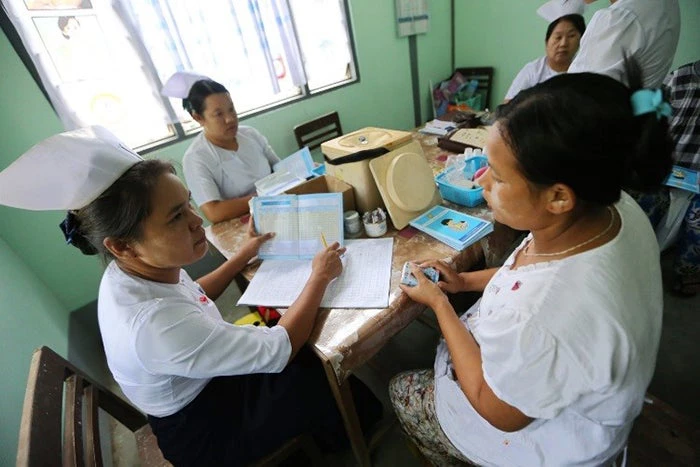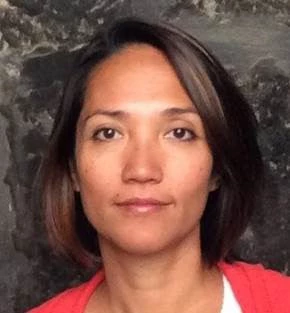
Myanmar’s people are its greatest resource. Its current young population and growing number of productive workers hold the promise of a demographic dividend and inclusive growth. With a steady pace of economic growth, Myanmar has the potential to get rich before it gets old.
For Myanmar to deliver on this potential it can prioritize investing in its people, by strengthening the country's health, education, and social protection systems. Education and health directly improve chances of employment. Individuals who complete more years of schooling earn a higher income. Improving health, education and social protections – closing the gap – is not a mere by-product of economic development, but is essential to shared prosperity.
Myanmar in the early 1960s, poised to be the economic engine of the region, prided itself for having the highest literacy rate in Asia. After decades of underspending and neglect of social services and programs, human development outcomes deteriorated, ranking among the lowest in the region. Rural and poorer households bore a greater burden of ill health, low educational attainment and vulnerability.
In 2009, a major share of the total education and health spending came from households, 63% and 82% respectively. This direct out-of-pocket spending, which was one of the highest in the world, prevented people from seeking care and attending school, because they could not afford it. In the case of health, families were made even poorer, as they had to sell their belongings to pay for the care they needed. And there was no system to protect them.
Even today, social assistance programs only reach 0.1% of the population, compared to 39% among East Asian and the Pacific countries. This is in part due to extremely low level of social assistance spending, which is only 0.02% of GDP, compared to an average of 1.1% of GDP among low-income countries.
The situation of U Tin Myint, 66, who lives in Takone Township, Central Myanmar with his wife, children and grandchildren, exemplifies the need for comprehensive social protection programs.
All of his eight children dropped out of school to work as casual laborers. Four of his children currently work, each earning on average 2,500 Kyat ($2) per day during the rainy season to support the household of 13. Neither U Tin Myint nor his wife, Daw Nyunt, have a pension. Myanmar’s social security programs don’t provide coverage yet for informal workers like U Tin Myint.
“Two of my daughters are widows looking after their children. One of my daughters passed away eight months ago due to pneumonia. I did not have the money to send her to a hospital for treatment,” he said.
In 2011 the tide began to turn, when social spending rose significantly and when decentralization was enabled through grants provided directly to schools, hospitals, and health centers in urban and rural areas, at the frontline of service delivery. Health spending increased from 0.2% of GDP in 2009 to over 1% of GDP in 2014. Education spending increased from 0.7% of GDP in 2011 to an estimated 2% of GDP in 2014.
With increased spending on social programs, Myanmar can focus on closing the service delivery gap and tackling the disparities in access that exist across geographical areas and socio economic groups. The country today has a weighty opportunity to ensure that everyone in the country has access to essential health and education services of adequate quality and that families are protected from falling into poverty.
What policies could help to make the most of this opportunity?
Spending better. By providing more resources and attention to lagging geographic areas and to the poor and vulnerable groups; by prioritizing interventions that give value for money (e.g. allocating more for prevention and public health, and improving the quality of basic education); by reducing waste through better procurement of medicines and school books, by using information and communication technologies, such as mobile phones, to deliver training, information, and payment of salaries for front line staff.
The Government of Vietnam, for example, introduced poverty targeted stipends early on to enable children from poor households and those living in remote areas to complete schooling. Between 1998 and 2002, the benefit incidence from government spending on upper secondary education increased 15% for the poor and near poor to 25%.
Reducing parallel financing channels. More coordination and greater pooling of resources, both from government and external assistance, will help to enhance oversight and accountability, reduce administrative and management costs, and enable quicker response, such as in times of disasters. Ethiopia provides an example where the Productive Safety Net Program (PSNP) ensures financial commitments from donors are in place before any crises occurs, reducing emergency response from eight to two months.
Prioritizing social program spending. Increasing spending on social sectors in the national budget, by shifting funding from other sectors, such as military spending, from reducing waste, and from getting new funds from improved tax administration and reformed tax policies, such as a tobacco tax. In Thailand, a 2% surcharge is placed on top of the tobacco and alcohol excise tax, which is used for programs to fight various health risks including tobacco, alcohol, HIV/AIDS, non-communicable diseases and road safety.
Extending social services to conflict-affected areas. By creating a greater alignment between national government systems and existing service delivery arrangements in conflicted areas, working with clinics and service providers that local communities have long trusted and utilized.
It is a momentous time for Myanmar. There is great scope for effective, high return investments in social programs to improve health and education outcomes and to protect families from falling into poverty or being further impoverished. Myanmar has the opportunity to translate these opportunities into tangible benefits of social services for all people in Myanmar.
A version of this article appeared in the Global New Light of Myanmar. Read the blog in Myanmar language.


Join the Conversation